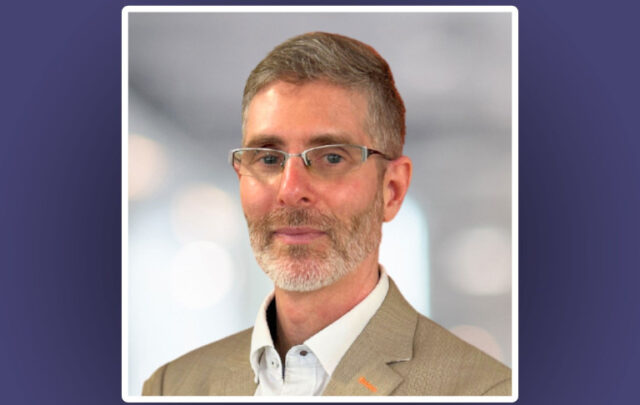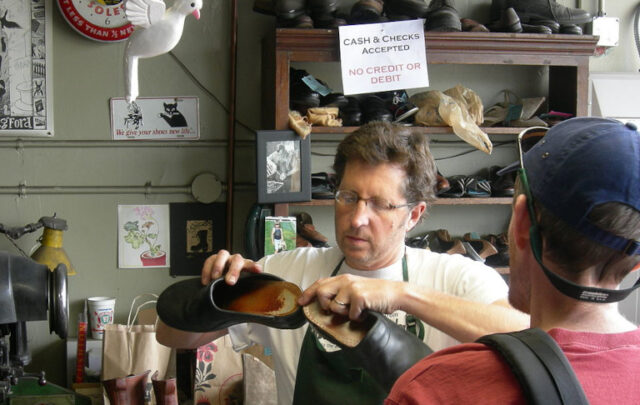Cities and poor people living in cities are often forgotten in climate adaptation planning. How can we fix that?
WHO: Barry Smith, International Institute for Environment and Development (IIED) Climate Change and Human Settlements Group
Donald Brown, Independent Researcher
David Dodman, Senior Researcher, IIED Human Settlements and Climate Change Group; Team Leader, Cities and Climate Change
WHAT: A look at how adaptation finance can better serve poor communities, especially in cities
WHEN: January 2014
WHERE: IIED website
TITLE: Reconfiguring urban adaptation finance (open access working paper)
Climate change adaptation is expensive – more expensive than mitigation as the USA discovered last year when it broke a record for billion dollar disasters and spent more on disaster recovery than health and education combined. Unfortunately, the people who are most vulnerable to climate extremes are poor people who tend to live in areas that are less secure, have worse infrastructure, less access to finance and legal protection and less ability to move when a storm wipes out their neighbourhood.
Billion dollar disasters – they’re a growth industry right now (from Jeff Masters, Weather Underground)
This paper looks at adaptation in cities in developing countries that have large informal settlements like slums, but as Hurricanes Katrina and Sandy both showed, these issues are going to affect populations around the world, regardless of where you live.
However, in developing countries, the issue is on a larger scale. As the authors of this paper point out, slums are often built in hazard-prone areas, and because cities don’t want to admit they have problems with poverty and slums, they don’t get counted and often get ignored when climate adaptation is planned.
Issues with infrastructure and utilities – Kibera slum in Nairobi (Norvartis, flickr)
Currently, urban adaptation finance involves many international organisations (your top-down approach) as well as local organisations. The international ones are international NGOs, the World Bank and the UN through the UNFCCC (UN Framework Convention on Climate Change). One of the risks with this system is that instead of cities and countries getting new funding for adaptation, they could just get old funding ‘re-labelled’ as adaptation funding, which won’t work. The authors also point out that adaptation funding is required to be new and additional, which makes sense because climate impacts are also new and additional. Regular investments through international adaptation funding also need to be ‘climate proofed’ which could be called ‘because climate change will affect everything, it needs to be built into all decision-making processes’.
There is definitely an important role though, for NGOs to do this and ensure that including climate change in decision-making is mainstreamed, at which point it’s finally not just me being the weirdo at the party asking people how far above sea level their home is.
No seriously, how far above sea level is your house? (Nick Hewson, flickr)
UNFCCC processes are (unsurprisingly) labyrinthine and difficult to get money out of. They have a special climate change fund (which gets shortened to SCCF because everything is an acronym at the UN), which has $239 million, but so far it’s been slow on the spending of that adaptation fund. This is because the fund has a governing council that represents the polluting countries (that’s us – the industrialised developed countries that are responsible for most climate change) more than the developing countries, giving the polluting countries an effective veto over the money.
The UNFCCC also has an Adaptation Fund, which is funded by a 2% levy on clean development mechanism projects. It’s more transparent, developing countries have more of a seat at the table and the process also includes NGOs, however the fund is comparatively smaller at $151million.
The World Bank has a Pilot Program for Climate Resilience (PPCR) which as a pot of $1billion for climate adaptation. The World Bank has only handed out $8million so far, so there’s some kind of disconnect happening there. The authors suggest that it’s because the planning processes for the projects are required to be between 3 – 18 months long. Which is fine for a project when everyone has agreed what you’re working towards, but when you’re doing climate change adaptation and you need to sit down with a community and explain to people why they might need to leave the place that their family has lived for generations because sea level rise will inundate them, that’s a longer, more difficult conversation.
National systems for funding climate adaptation are more successful at getting the money on the ground and working towards change. Some governments have been early leaders in climate adaptation funds, most notably Rwanda who started their National Climate and Environment Fund in 2005. Way to get ahead of the pack Rwanda! They were recently granted £22.5million from the British Department for International Development, which makes their fund the largest climate fund in Africa.
National adaptation funds give better access to funding for municipalities and local/regional governments. Which makes sense – it’s easier to apply for funding through an organisation you know that speaks the same language than to try and work out where you fit within the World Bank or the UN. However, the authors point out that strengthening the capacity of local organisations working on adaptation in cities could actually be the most effective spend of adaptation money. Why? Because cities are on the ground and have control over things that can make an impact like transit and sea walls and pipes and power lines and garbage collection and disposal. Things that are too local for an international organisation to deal with.
For example, microfinance has been a huge success as a ‘bottom up’ approach to funding adaptation and capacity in communities. Female-led savings groups in poor communities have linked together with groups like Urban Poor Fund International, Slum Dwellers International and the International Institute for Environment and Development (the organisation that commissioned this paper).
By their powers combined, these groups have coordinated pooled savings funds across 464 cities with successes across the globe including places like Malawi. The Malawi Homeless People’s Federation formed a Center for Community Organisation and Development where they coordinated and helped out local savings groups that generally comprised between 30-70 members of a neighbourhood. They also organised ‘exchange visits’ where people from an established savings group would go to a different neighbourhood to tell them about the program and help them set up their own savings group, creating stronger community links within the cities. They now have savings groups across 28 urban and rural centres in Malawi, with over $148,000 in savings, which is phenomenal.
The challenge is then, to connect these two processes – the local and sub-national projects that have connections within the community are the successful ones, and the international organisations are the ones with all the adaptation funding. How can we get them talking to each other so we can start working towards more resilient communities?
The authors suggest the biggest problem is how difficult the international programs are to navigate, with a mismatch between the fiduciary responsibilities and level of reporting at the international level and the ability for poor communities to have the capacity to complete that reporting. Because unless you speak bureaucrat, it can be almost impossible to fill out those forms. Also, international NGO and aid programs often work at a very high level and are often not directly accountable to the communities they work in.
So what should we do? The authors suggest re-tooling the international aid process a bit – focusing on smaller grants ($1,000-$3,000 goes a long way in small communities), focusing on cities and climate adaptation on the ground as key points of adaptation, and encouraging private investment options that include social impact bonds. It’s going to take work, but since we haven’t stopped burning carbon yet, we’re going to need to do it.






